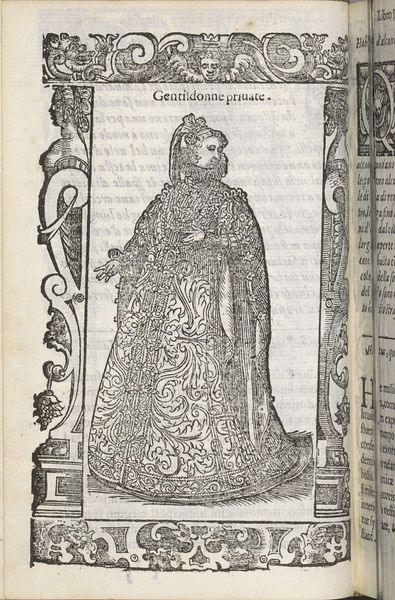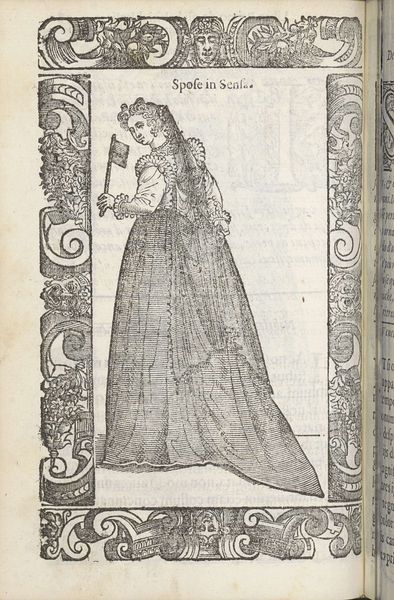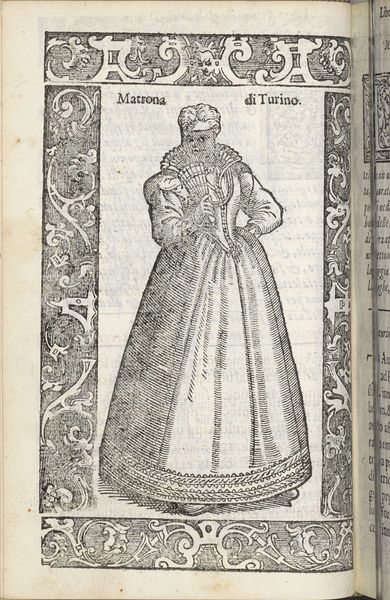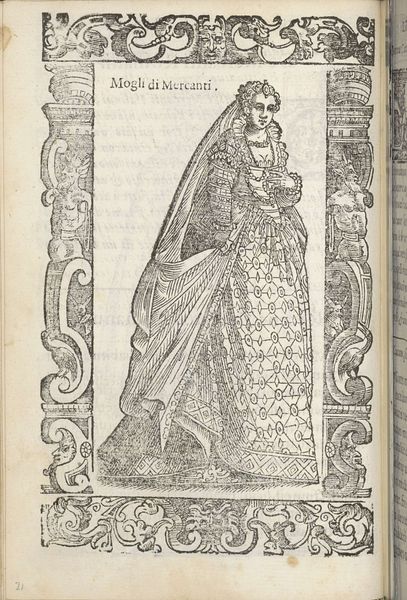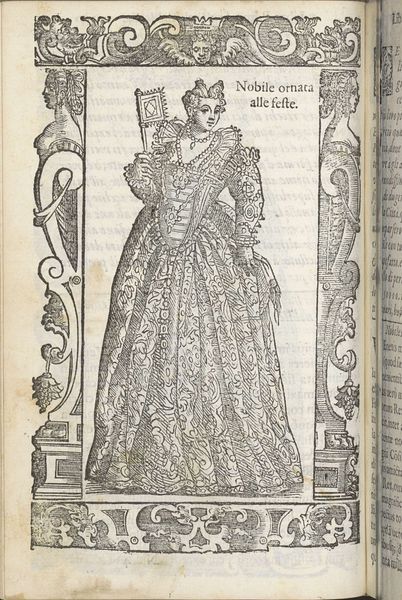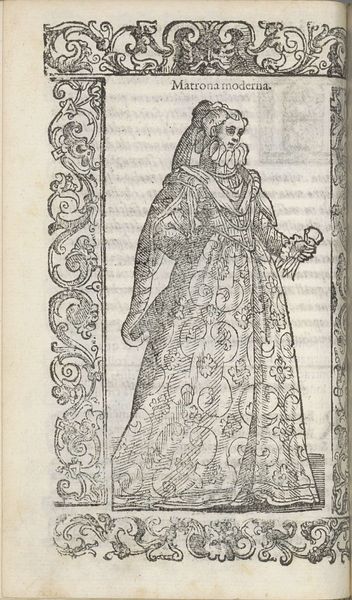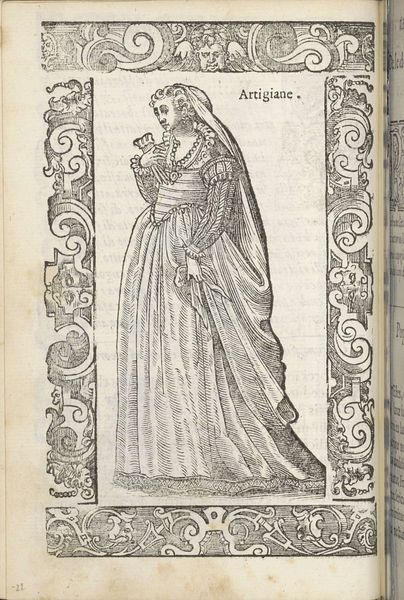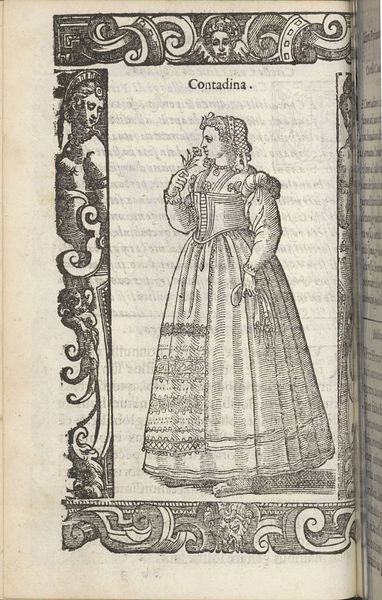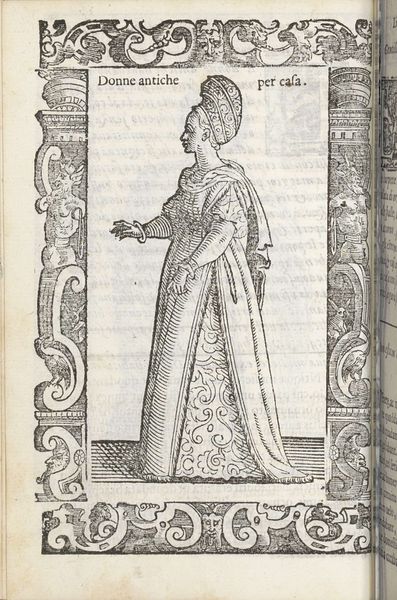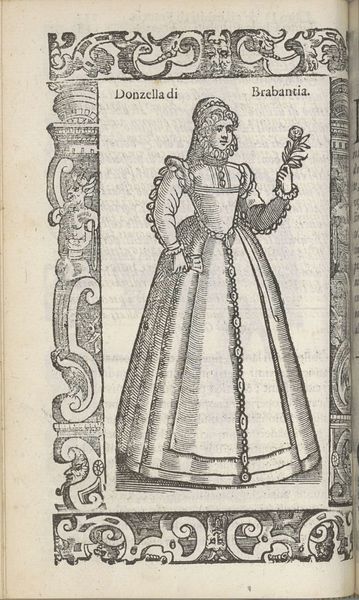
drawing, print, ink
#
portrait
#
drawing
#
aged paper
#
toned paper
# print
#
pen sketch
#
old engraving style
#
mannerism
#
personal sketchbook
#
ink
#
pen-ink sketch
#
ink colored
#
pen work
#
sketchbook drawing
#
sketchbook art
Dimensions: height 167 mm, width 125 mm
Copyright: Rijks Museum: Open Domain
Editor: This is "Donzella nobile," created around 1598 by Christoph Krieger. It's an ink drawing, maybe a print, on aged paper, with some really intricate pen work. I find the depiction of the woman and her dress captivating, while the border gives me a slightly unsettling feeling. How do you interpret this work? Curator: The “Donzella nobile,” or “Noble Maiden,” certainly presents a fascinating blend of portraiture and cultural symbolism. The unsettling feeling you pick up from the border, is worth considering. These elaborate, sometimes grotesque faces in the ornamentation reflect a Mannerist aesthetic popular at the time, playing with contrast and ambiguity. How do you think these choices serve the depiction of the young woman? Editor: Maybe they amplify her controlled expression? Like the artist is contrasting external pressures or societal expectations against her composure. Curator: Exactly. This visual juxtaposition speaks volumes about the role of women, particularly those of noble birth, in 16th-century society. Her attire becomes a signifier of status, and perhaps, constraint. Think about the artist using symbols to reflect and maybe subtly critique the complexities of that role. Notice how even the ‘aged’ paper becomes an attribute to it, as if hinting a deeper sense of collective historical narrative and continuity. Editor: That’s interesting! I never considered the paper itself to be part of the message. So the image becomes this conversation between the individual, her social position, and the enduring weight of history. Curator: Precisely. These artists encoded cultural information within their imagery. Understanding these visual symbols allows us to decode not just the aesthetic preferences, but the deeper societal values, anxieties, and aspirations of the time. Editor: I’m going to spend much more time thinking about the details now, the cultural memory embedded in the work. Curator: Wonderful! Art becomes so much more when you see how visual culture creates, negotiates, and perpetuates collective cultural meanings across time.
Comments
No comments
Be the first to comment and join the conversation on the ultimate creative platform.

